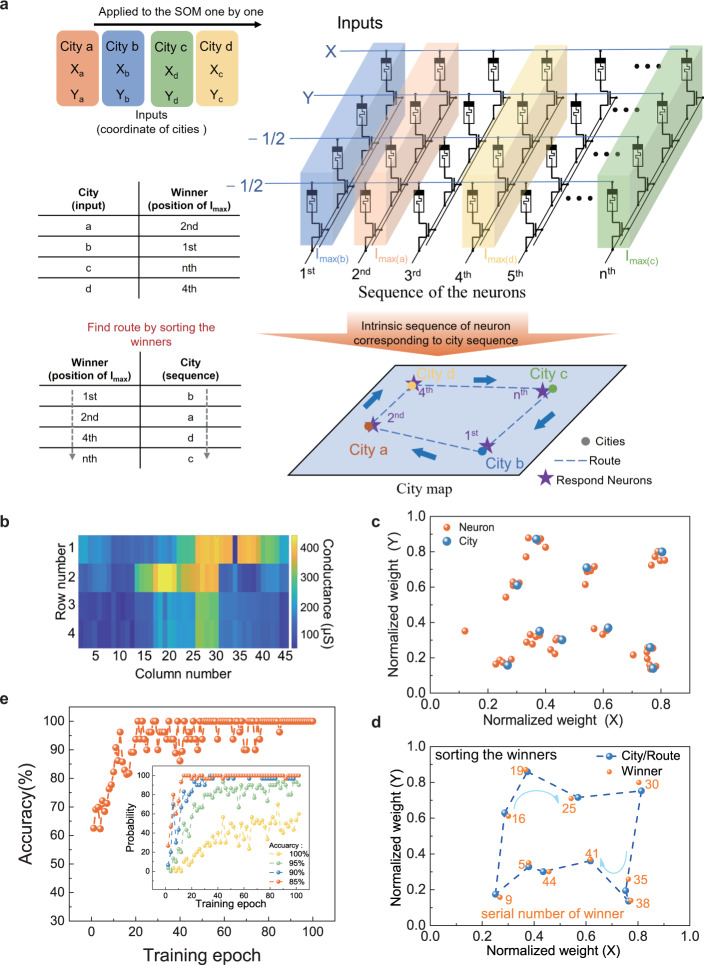Fig. 3. Memristor-based SOMs for TSP.
a Principle of solving TSP using memristor-based SOMs after the training process. The winner with the largest output current represents the node closest to the city. The weight updating process is similar to pushing the winner towards the city and inducing its neighborhoods to do with less intensity. This correlation between the motion of neighborhood nodes intuitively leads to a minimization of the distance, hence giving a short tour. In the testing process, all cities are applied to the SOM one by one. Normally different winners were found when applying different cities; the route can be directly found without extra configuration of the network by sorting the winners according to the intrinsic sequence of neurons in the memristor array. b Conductance of memristor arrays after 270 training epochs for solving TSP. c The city map and weight maps of all neurons after training. Blue dots represent 10 different cities, and red dots represent the normalized weights of 45 different neurons in city map. d Testing result of 10 cities TSP by 4 × 45 arrays. Ten different winners are found when applying to cities. And the shortest route (blue dashed lines) is determined by sorting the winners. The serial numbers of winners in the memristor array are showed by the digit next to the winner. e The accuracy of solving 10 city TSP by 45 nodes SOM increases with the number of training epochs. Inset shows the probabilities of different accuracies with the number of training epochs. Here the P100% is the success probability that finding the shortest route.

